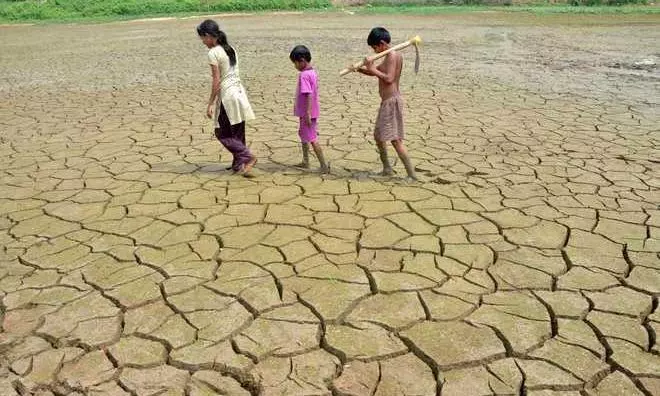
2020 was the 8th warmest year since 1901, says CRS report
text_fieldsNew Delhi: In the thick of the pandemic last year, we hardly had any time to ponder over climate.
Remember, the year that slinked as we went out wearing mask was one of the warmest in over a century.
The Climate Research and Services (CRS) of Indian Meteorological Department peg the year 2020 among the eight warmest years since 1901.
"The 2020 annual mean land surface air temperature for the country was +0.29 degree celsius above the average temperature for 1981-2010 period, thus making the year 2020 as the eighth warmest year on record since 1901," said the statement.
Curiously, the five warmest years on record were not in the remote past but they were 2016 (+0.71 degree celsius), 2009 (+0.55 degree celsius), 2017 (+0.541 degree celsius), 2010 (+0.539 degree celsius) and 2015 (+0.42 degree celsius).
More important, 12 out of 15 warmest years occurred in the recent fifteen years (2006-2020). Past decade (2001-2010/2011-2020) was also the warmest decade on record with anomalies of 0.23 degree celsius/0.34 degree celsius.
India's averaged annual mean temperature during 1901-2020 showed an upward trend of 0.62 degree celsius/100 years with significant increasing trend in maximum temperature (0.99 degree celsius/100 years) and relatively lower increasing trend(0.24 degree celsius/100 years) in minimum temperature.
The country averaged seasonal mean temperatures were also above the average during all the seasons except pre-monsoon season. The country averaged mean monthly temperatures were warmer than the normal during all the months of the year except March and June.
The mean temperatures exceeded the normal during September (by 0.72 degree celsius, warmest since 1901), August (by 0.58 degree celsius, second warmest), October (by 0.94 degree celsius, third warmest), July (by 0.56 degree celsius, fifth warmest), and December (by 0.39 degree celsius, seventh warmest).
The annual rainfall over the country was 109 per cent of long period average (LPA) of 117.7 cm. Time series of percentage departure of annual rainfall over the country as a whole since 1901.
Rainfall over the country as a whole during the SW monsoon season (June-September), which is the principal rainy season of the country, was above normal (109 per cent of LPA of 88 cm).
During this season, among the four broad geographical regions of the country, Central India, South Peninsular and East and Northeast India received seasonal rainfall of 115 per cent, 129 per cent and 106 per cent of its LPA respectively, while Northwest India received seasonal rainfall of 84 per cent of its LPA.
The 2020 Northeast monsoon season (October-December) rainfall over the country as a whole was normal (101 per cent of LPA). The seasonal rainfall during the northeast monsoon season over the core region of the south peninsula (comprising of five subdivisions viz. Coastal Andhra Pradesh, Rayalaseema, Tamil Nadu and Puducherry, South Interior Karnataka and Kerala, was also normal .
During 2020, five cyclones formed over the North Indian Ocean. These are Super cyclonic Storm Amphan, Very Severe Cyclonic Storms Nivar and Gati &, Severe Cyclonic Storm Nisarga, and Cyclonic Storm 'Burevi'.
The country also experienced other high impact weather events like, extremely heavy rainfall, floods, landslide, thunderstorm, lightning, cold waves.
(From IANS with edits)























